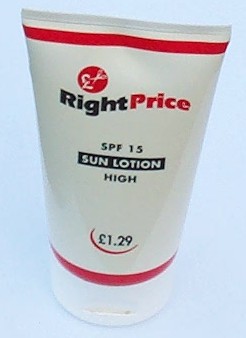Sunscreen facts for kids
Sunscreen is a special lotion, spray, or cream you put on your skin. It helps protect you from the sun's powerful ultraviolet (UV) rays. Using sunscreen can stop you from getting sunburn and other skin damage. It also lowers your chance of getting skin cancer later in life.
In the United States, sometimes people use the term "suntan lotion" differently. It can mean a product that helps you get a tan, not block the sun. These lotions might be for tanning beds or outdoor use. Some of them might not even have sun protection (SPF) in them.
What Are UV Rays?
The sun sends out different kinds of light, including ultraviolet (UV) rays. These rays can harm your skin. There are two main types of UV rays that sunscreen protects against:
- UVB rays: These are the main cause of sunburn. They have a wavelength between 290 and 320 nanometres.
- UVA rays: These rays go deeper into your skin. They can cause long-term damage, like making your skin look older faster. They have a wavelength between 320 and 400 nanometres.
The best sunscreens protect you from both UVA and UVB rays. This is often called "broad-spectrum" protection.
How Sunscreen Works
Sunscreen works in two main ways to protect your skin:
- Absorbing UV light: Some sunscreens contain special ingredients that soak up UV light before it can hurt your skin. Think of it like a sponge for sunlight. An example of such an ingredient is oxybenzone. These are often called "chemical" sunscreens.
- Reflecting UV light: Other sunscreens use tiny minerals that sit on top of your skin. These minerals act like a shield, bouncing the UV light away from your skin. Common minerals used are titanium dioxide and zinc oxide. These are often called "mineral" or "physical" sunscreens.
Many sunscreens use a mix of both types of ingredients to give you the best protection.
Images for kids
-
Sunscreen helps prevent sunburn, such as this, which has blistered
See also
In Spanish: Protector solar para niños




